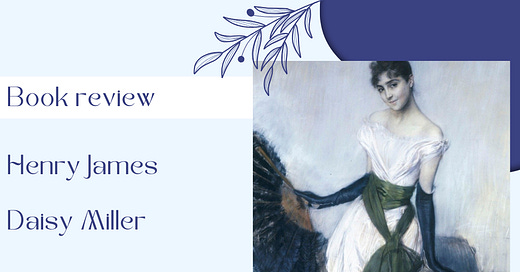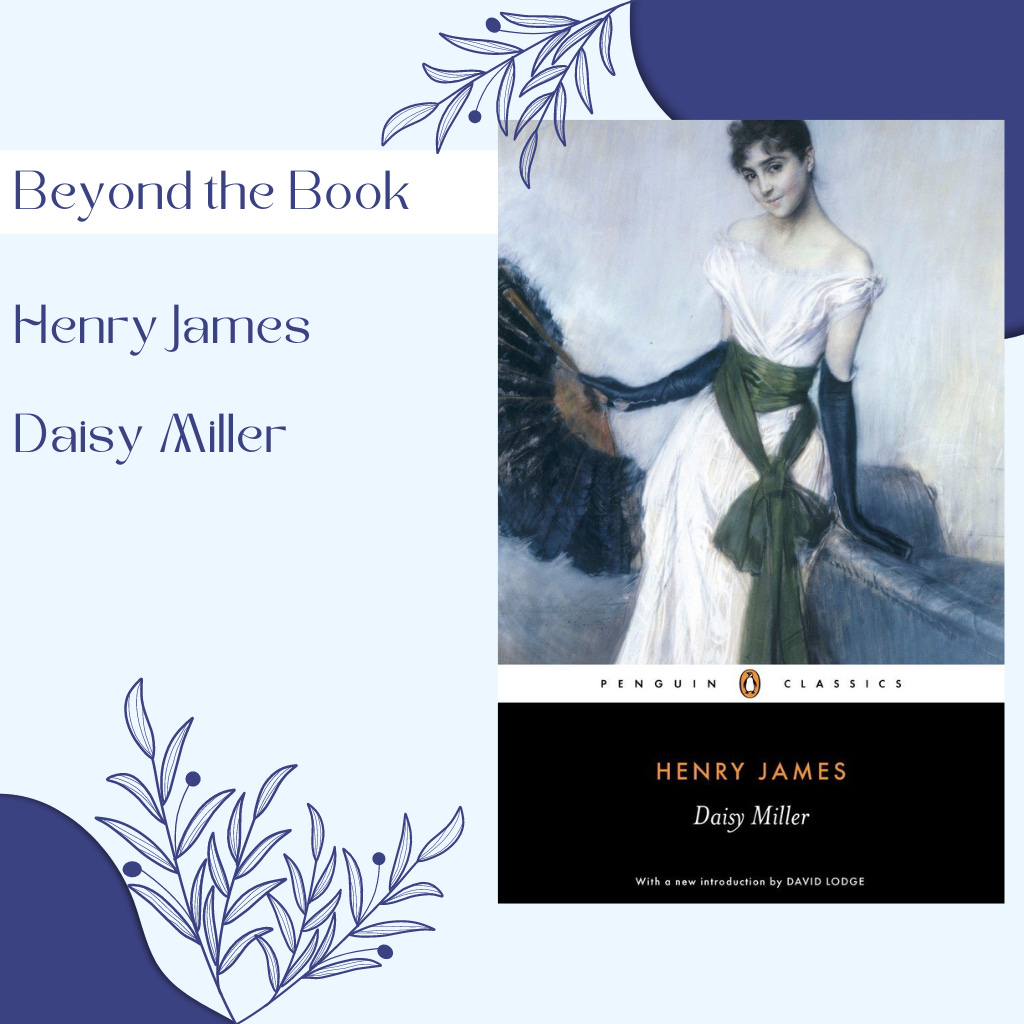Beyond the Book: "Daisy Miller" by Henry James
Henry James is indisputably one of the iconic figures of 19th-20th century American literature. Beyond leaving behind a voluminous body of work, which prompts one to read one short story after another and then delve into his novels, what captivated me most is James' writing style. He is far from the minimalist, short-sentenced style made popular by Hemingway, where a few crisp, well-thought-out words create mosaic-like pieces of a picture. Instead, he is recognizable by his longer sentences and vibrant vocabulary.
After reading Hemingway's “A Moveable Feast” one or two weeks ago and wanting something less terse, I chose "Daisy Miller." I recommend this novella, readable in just an hour or two, to those with limited time but a desire for a brief intellectual journey into the life of the late 1800s' social elite and the tension between European and American elites, as well as between the bourgeoisie and the aristocracy.
From here on, the article contains spoilers. If you don't wish to know more about the plot, first read the story, then return to this review.
To me, "Daisy Miller" is intriguing not just because it shows how real aristocracy distanced itself from wealthy capitalists lacking noble titles. The transition between these two worlds was almost impossible, except in cases where someone from the bourgeoisie possessed a unique talent, immense amount of money or rare beauty. Even after a successful transition, born aristocrats mostly looked down upon them, though it was better to be a dwarf among giants than a giant among dwarfs.
In the story, Daisy Miller is noticeably caught between these two worlds. Because she's elegant, graceful, and beautiful, she obviously aims for a husband from a higher social class. Yet her behavior excludes her from that echelon. Through the criticisms articulated by Frederick Winterbourne's aunt, Mrs. Costello, James clearly communicates that Daisy Miller is neither cultured nor refined enough to be introduced to, let alone marry, an aristocrat.
Nevertheless, Winterbourne continues courting her, uncertain whether her flirtations with practically every man stem from childish naivety or a blatant disregard for societal norms. He questions whether she is oblivious to the messes and turbulent emotions she creates or if she might be – in modern terms – a sociopath.
I believe most readers lean towards the latter interpretation. Daisy is disobedient, ignoring advice from elder women, warnings from their loyal servant, and Winterbourne's expressed disapproval. She roams around Rome with unfamiliar men, even after dark, and spends her days with an Italian man named Giovanelli. Despite their close association, there's no commitment between them, leading to her rejection by both the Italian and American elites.
Daisy goes so far as to jeopardize her health and life just to "do as she pleases". This self-destructive behavior, for which she pays dearly by the end, can be puzzling.
What drives this young woman's stubbornness? She doesn't display the fierce determination of heroines who fight to express themselves even if it means breaking societal norms. Daisy isn't a Virginia Woolf, Joan of Arc, or Marie Curie. She doesn't seem to be fighting for anything or struggling against societal expectations. Instead, she enjoys the benefits of her gender – the attention from men she can summon, the whims they should cater to.
So, why couldn't Daisy conform if there wasn't a cause she stood for? In my opinion, as is often the case, the answer isn't found among the visible characters but in those absent. Who, crucial to Daisy's life, never appears in the novella? Her father. While her mother and brother accompany her, along with their servant, her father is notably absent. A few offhand comments reveal that he is very wealthy and busy, which is perhaps why he doesn't travel with the family. This arrangement seems to be regular, suggesting that having a living but inaccessible father might explain Daisy's behavior.
She misses paternal attention desperately. This subconscious compulsion to attract male attention, delving deeper into flings even at the cost of her future prospects, is overwhelming.
I think Daisy isn't a sociopath or naive, but a girl deeply pained by her father's absence from her life. He provided lavish dresses, fans, and trips but no attention or love. Unconsciously, Daisy tries to replace that missing paternal affection with other men's love, not realizing that is impossible. Strangers’ attention will never replace a father’s. The healthy love and attention of a father carries a completely different energy from those of men looking for romance or even marriage. These energies are not interchangeable. Even Winterbourne's more strict attention, reminiscent of a father's, doesn't fill the void.
If one reads the novella with this perspective, Daisy emerges not as a mad or obstinate creature but a deeply wounded soul trying to heal and, if not that, at least draw her father's attention through scandal.
When we say someone marries a person similar to their own father, we're referring to the same dynamic observed in Daisy, albeit often in a less damaged form.
Overall, I enjoyed the short story and will certainly read more Henry James. I feel that, despite the fact that the story aptly showcases the rigid norm system of the European elite and contrasts it with the much looser rules of the American characters, the most interesting aspect is the invisible dynamics that arise from the relationship between Daisy and her father. There is much to write about the dynamics of the Miller family, about the boy who also lacks a strong, rule-setting male role model, and about the mother whose distant marriage has seemingly eroded all her feminine strength. However, I do not want to extend this review longer than the novella itself; instead, I recommend reading it!
– Eszter
Some links above are Amazon affiliate links, and if you buy something through these links I may earn a small commission at no extra cost to you.
Book Review: Ernest Hemingway – A Moveable Feast
Home | Notes | Articles | Eszter’s Magic | Literary Bonbons | Short Stories and Guides | Beyond the Book | EWE Issues | Archive | About





